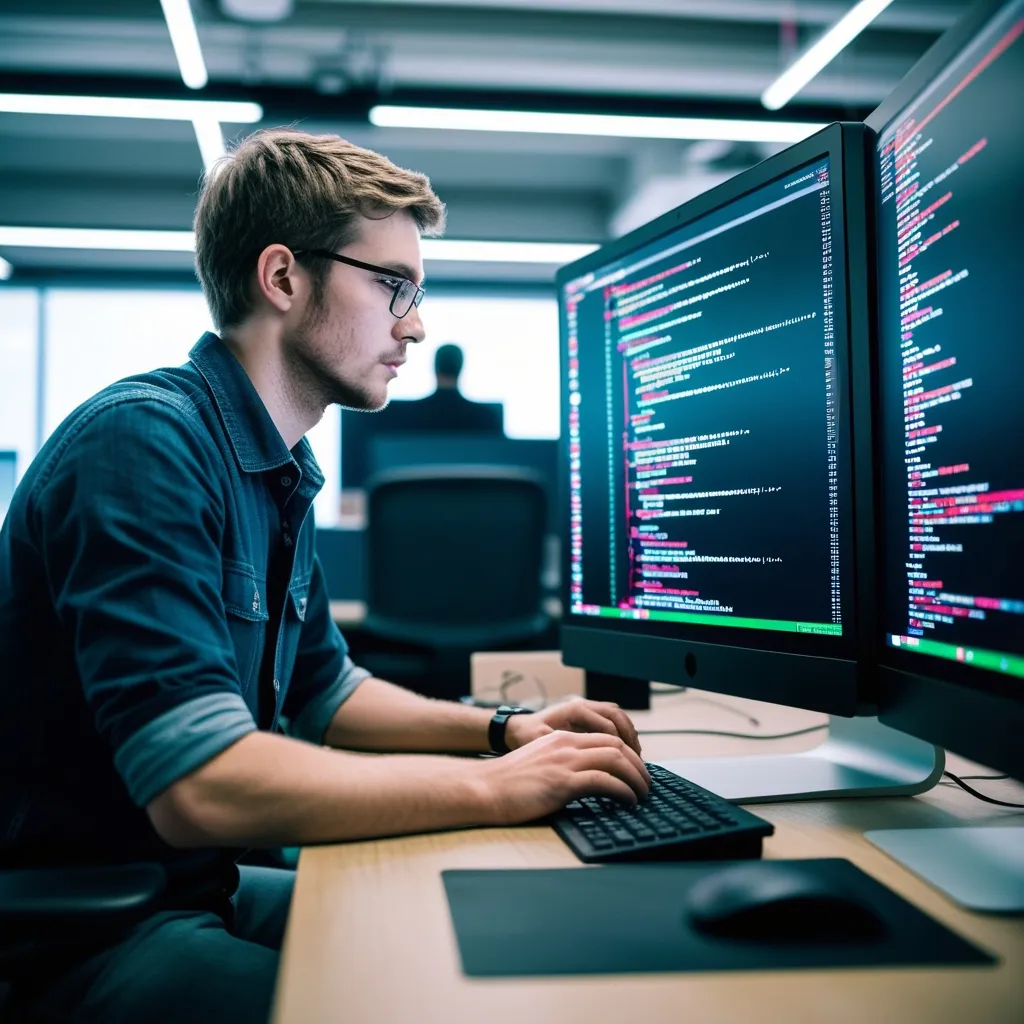Alright, let’s dive into the world of Drag-and-Drop in Angular! If you’ve ever wanted to create slick, interactive UIs that let users move stuff around with ease, you’re in for a treat. Angular’s CDK (Component Dev Kit) is your secret weapon here, and I’m gonna show you how to wield it like a pro.
First things first, what’s the big deal about drag-and-drop anyway? Well, it’s all about creating intuitive user experiences. Think about how satisfying it is to rearrange your apps on your phone’s home screen or organize your Trello board. That’s the kind of magic we’re going to bring to your Angular apps.
Now, before we get our hands dirty with code, let’s make sure we’ve got our tools ready. You’ll need Angular CLI installed, and we’ll be using the CDK’s drag-and-drop module. If you haven’t already, go ahead and install it:
ng add @angular/cdk
Once that’s done, import the DragDropModule in your app.module.ts:
import { DragDropModule } from '@angular/cdk/drag-drop';
@NgModule({
// ...
imports: [
// ...
DragDropModule
]
})
export class AppModule { }
Alright, now we’re cooking with gas! Let’s start with something simple – a draggable element. In your component’s template, add this:
<div cdkDrag>Drag me!</div>
Just like that, you’ve got a draggable div. Pretty cool, huh? But we can do so much more. Let’s create a list of items that we can reorder:
<ul cdkDropList (cdkDropListDropped)="drop($event)">
<li *ngFor="let item of items" cdkDrag>{{item}}</li>
</ul>
In your component, you’ll need to define the items array and the drop function:
import { CdkDragDrop, moveItemInArray } from '@angular/cdk/drag-drop';
export class MyComponent {
items = ['Item 1', 'Item 2', 'Item 3', 'Item 4'];
drop(event: CdkDragDrop<string[]>) {
moveItemInArray(this.items, event.previousIndex, event.currentIndex);
}
}
Now you’ve got a fully functional drag-and-drop list! But let’s not stop there. What if we want to move items between two lists? That’s where it gets really interesting.
Here’s how you can set up two lists that can exchange items:
<div class="container">
<h2>To Do</h2>
<div
cdkDropList
#todoList="cdkDropList"
[cdkDropListData]="todo"
[cdkDropListConnectedTo]="[doneList]"
(cdkDropListDropped)="drop($event)">
<div class="item" *ngFor="let item of todo" cdkDrag>{{item}}</div>
</div>
</div>
<div class="container">
<h2>Done</h2>
<div
cdkDropList
#doneList="cdkDropList"
[cdkDropListData]="done"
[cdkDropListConnectedTo]="[todoList]"
(cdkDropListDropped)="drop($event)">
<div class="item" *ngFor="let item of done" cdkDrag>{{item}}</div>
</div>
</div>
And in your component:
import { CdkDragDrop, moveItemInArray, transferArrayItem } from '@angular/cdk/drag-drop';
export class MyComponent {
todo = ['Get coffee', 'Check emails', 'Walk dog'];
done = ['Write blog post', 'Take nap'];
drop(event: CdkDragDrop<string[]>) {
if (event.previousContainer === event.container) {
moveItemInArray(event.container.data, event.previousIndex, event.currentIndex);
} else {
transferArrayItem(
event.previousContainer.data,
event.container.data,
event.previousIndex,
event.currentIndex,
);
}
}
}
Now we’re talking! You’ve got two lists that can exchange items. This is perfect for todo apps, kanban boards, or any UI where you need to categorize items.
But wait, there’s more! (I’ve always wanted to say that.) Let’s add some pizzazz to our drag-and-drop experience. How about a custom drag preview? You can do that with a ng-template:
<div cdkDrag>
Drag me!
<ng-template cdkDragPreview>
<div class="custom-preview">I'm being dragged!</div>
</ng-template>
</div>
Or maybe you want to add a placeholder that shows where the item will be dropped:
<div cdkDropList (cdkDropListDropped)="drop($event)">
<div *ngFor="let item of items" cdkDrag>
{{item}}
<div *cdkDragPlaceholder class="placeholder">Drop here</div>
</div>
</div>
The possibilities are endless! You can even get fancy with animations. Here’s a quick example of how to add a fade-in effect when dragging:
import { trigger, transition, style, animate } from '@angular/animations';
@Component({
// ...
animations: [
trigger('fade', [
transition(':enter', [
style({ opacity: 0 }),
animate('300ms', style({ opacity: 1 })),
]),
transition(':leave', [
animate('300ms', style({ opacity: 0 }))
])
])
]
})
export class MyComponent {
// ...
}
Then in your template:
<div cdkDropList (cdkDropListDropped)="drop($event)">
<div *ngFor="let item of items" cdkDrag [@fade]>{{item}}</div>
</div>
Now your items will fade in and out as they’re dragged. Smooth!
One thing I’ve learned from my own projects is that drag-and-drop can be a game-changer for user engagement. I once built a workout planner app where users could drag exercises into their weekly schedule. The feedback was amazing – people loved how intuitive it felt to build their routines.
But here’s a pro tip: always think about accessibility. Not everyone can use a mouse, so make sure your drag-and-drop functionality has keyboard alternatives. The CDK helps with this, but it’s up to you to implement it properly.
Another cool trick I’ve used is combining drag-and-drop with real-time updates. Imagine a collaborative task board where multiple users can drag tasks around, and everyone sees the changes instantly. You can achieve this by hooking up your drag-and-drop logic to a real-time database like Firebase.
Here’s a quick example of how you might update Firebase after a drop event:
import { AngularFirestore } from '@angular/fire/firestore';
export class MyComponent {
constructor(private firestore: AngularFirestore) {}
drop(event: CdkDragDrop<string[]>) {
moveItemInArray(this.items, event.previousIndex, event.currentIndex);
this.updateFirestore();
}
updateFirestore() {
this.firestore.collection('items').doc('list').set({ items: this.items });
}
}
This is just scratching the surface of what’s possible with drag-and-drop in Angular. You can create sortable tables, image galleries, complex form builders – you name it. The key is to let your imagination run wild and think about how drag-and-drop can make your users’ lives easier.
Remember, the best UIs are the ones that feel natural and intuitive. Drag-and-drop, when done right, can make your app feel alive and responsive. It’s not just about moving elements around – it’s about creating an experience that your users will love.
So go forth and drag-and-drop your way to awesome UIs! Experiment, have fun, and don’t be afraid to push the boundaries. Who knows? You might just create the next big thing in user interaction. And if you do, don’t forget to send me a link – I’d love to see what you come up with!






